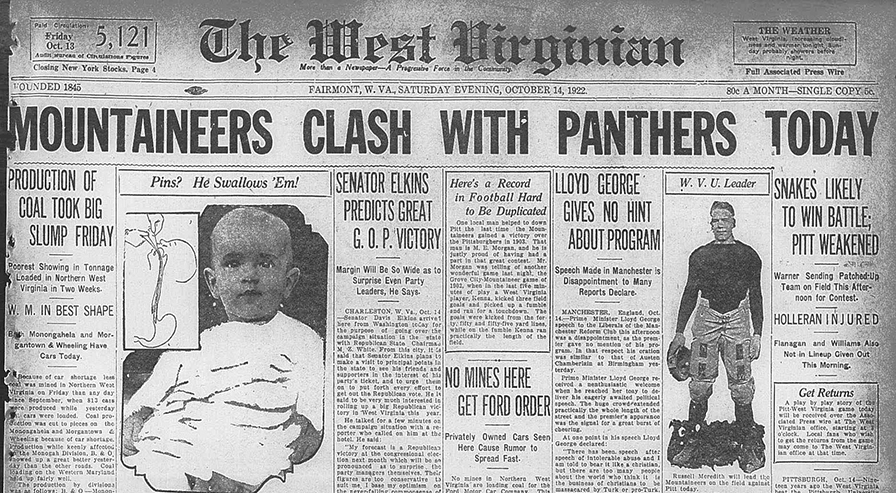WVRHC receives fifth NEH grant to digitize historical newspapers
Posted by Monte Maxwell.September 18th, 2019

This image is an example of the searchable content available on the Chronicling America website.
The West Virginia University Libraries’ West Virginia & Regional History Center has received a $201,917 grant – its fifth from the National Endowment for the Humanities – to continue digitizing newspapers published in West Virginia from 1790 to 1923.
The award is part of the National Digital Newspaper Program, a collaboration between the NEH and the Library of Congress to enlist libraries and institutions from around the country to create a digital database of historical United States newspapers. This grant brings the NEH’s total funding of the WVRHC’s efforts to $968,000.
“We are honored that the NEH recognizes the tremendous value of the historical newspapers archived in the WVRHC,” WVRHC Director John Cuthbert said. “Their support speaks volumes to the instrumental roles the Mountain State and its citizens played in the formation and growth of our nation.”
The Chronicling America website – chroniclingamerica.loc.gov – provides access to more than 15 million newspaper pages from 1789 to 1963. So far, the WVRHC has contributed 400,000 pages from more than 50 historic West Virginia newspapers. And, because of this grant, another 100,000 pages will soon be added to the site.
WVRHC Curator Stewart Plein said this round of newspapers focuses on two periods of great upheaval in West Virginia history that have national implications – the Civil War and the Mine Wars.
“The struggles of West Virginia in the nineteenth and twentieth centuries were the struggles of the nation,” Plein said. “West Virginia was at the crossroads of American history during these periods and the state’s newspapers serve as a compendium of Civil War and labor history in the United States.”
The Eastern Panhandle counties of Jefferson and Berkeley were heavily engaged during the Civil War in battle and conflict. Plein cites three incidents that had major implications:
- John Brown’s 1859 raid on Harpers Ferry ignited a firestorm that drove the country into the Civil War.
- The Battle of Charles Town in 1863 saw the Confederates victorious, but it would fall back into Union hands for the rest of the war.
- The hotly contested town of Martinsburg bore a heavy toll during the war as it was captured and recaptured a total of thirty seven times, with control constantly shifting between the Confederacy and the Union.
“The strategic locations of these towns made this area a hotbed of activity throughout the war,” Plein said.
A half century later, in the southern coalfields, Mingo and Logan counties became the epicenter of labor unrest and spurred a national debate on labor, unions, job safety and security.
“The mine wars of Paint Creek, Cabin Creek, the Battle of Blair Mountain, and the shootout at Matewan exposed the poor work and living conditions of miners and their desire for a better way of life for themselves and their families,” Plein said.
Fueled by an initial $266,000 grant in 2011, the WVRHC began by concentrating on the Wheeling Intelligencer, which they identified as the most significant newspaper for the time period. The only daily newspaper being published in western Virginia at the start of the Civil War, it held anti-slavery and pro-Union stances and supported the statehood movement.
With the next three grant cycles, the WVRHC widened their scope to include newspapers from around the state and incorporate reporting from both sides of the Civil War conflict and issues such as the growing antebellum conflict between eastern and western Virginia, West Virginia’s statehood movement and establishment, West Virginia’s 1872 Constitution, Reconstruction and the United States’ Centennial.
The WVRHC holds the most comprehensive collection of West Virginia newspapers, including more than 50,000 reels of microfilm. The collection is the Center’s most frequently consulted resource.
“Newspapers are among the most significant resources for studying nearly every topic. They are a daily record of what was happening in society over the years,” Cuthbert said.





